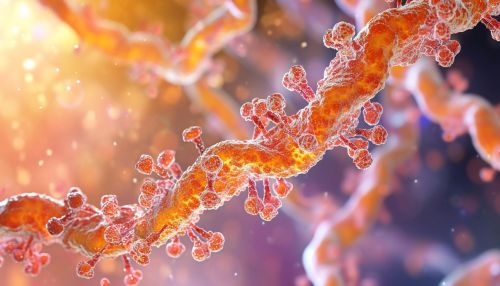Interleukin-6 receptor
Introduction
Interleukin-6 receptor (IL-6R) is a type of protein that is found on the surface of cells in the human body. It is part of the cytokine receptor family, which plays a crucial role in transmitting signals within and between cells. IL-6R specifically binds to the cytokine interleukin 6 (IL-6), initiating a cascade of intracellular events that can lead to inflammation, immune response, and cell growth.


Structure
The IL-6R protein is composed of two main parts: an extracellular domain and a transmembrane domain. The extracellular domain is responsible for binding to IL-6, while the transmembrane domain allows the receptor to anchor into the cell membrane. The structure of IL-6R is complex and involves several subunits, each with a specific function.
Function
When IL-6 binds to IL-6R, it triggers the receptor to interact with another protein called gp130. This interaction activates a signaling pathway that leads to the activation of various genes involved in inflammation and immune response. The IL-6/IL-6R/gp130 complex can also stimulate cell growth and differentiation, contributing to tissue regeneration and wound healing.
Role in Disease
Abnormal IL-6R signaling has been implicated in a number of diseases, including rheumatoid arthritis, multiple myeloma, and Castleman's disease. In these conditions, excessive IL-6 signaling through IL-6R leads to chronic inflammation and abnormal cell growth. Therapies that target IL-6R, such as the drug tocilizumab, have been developed to treat these diseases.
Research
Research into IL-6R continues to uncover its complex role in health and disease. Recent studies have explored its involvement in neurodegenerative diseases, cancer, and cardiovascular diseases. Understanding the precise mechanisms of IL-6R signaling and its regulation could lead to the development of new therapeutic strategies.
